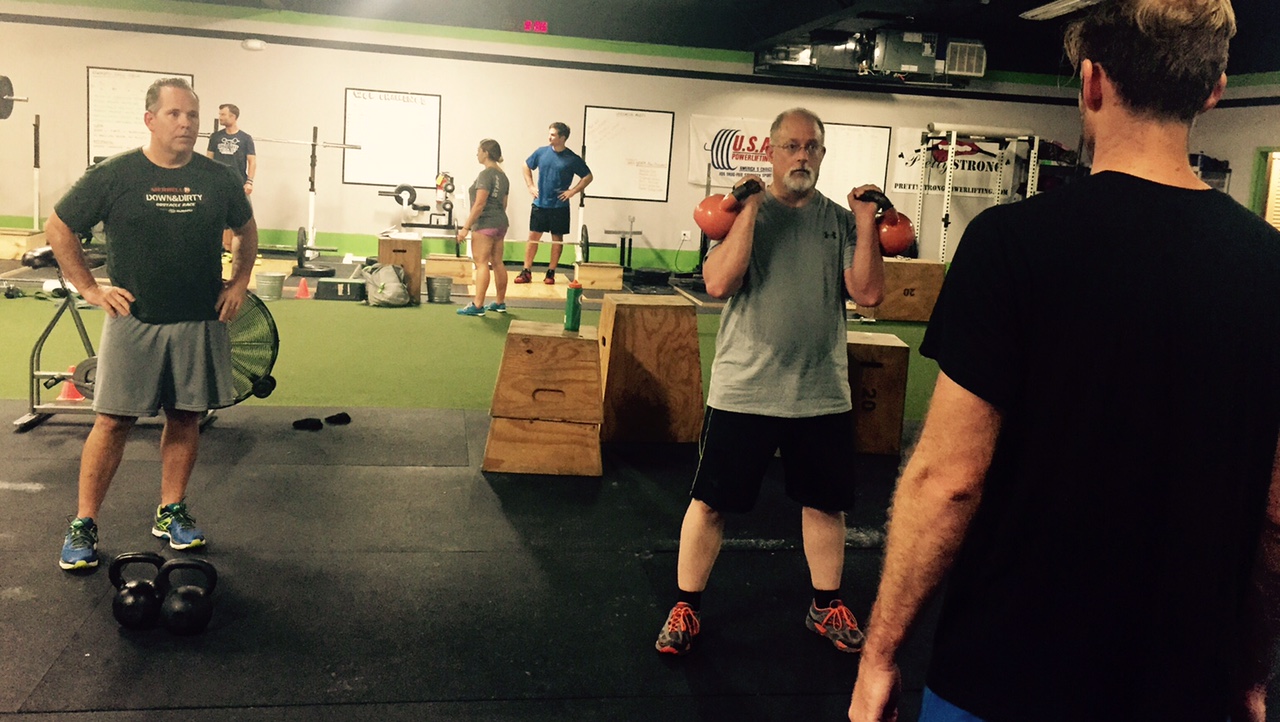As children, we moved for three primary reasons – to get something, get somewhere, or to play. But as we were learning to use our bodies, we had to be quite creative in achieving each of those purposes.
Getting from the couch to the kitchen is a simple task for any able-bodied person, but for a 11-month-old it may require any combination of turning, squatting, sitting, crawling, pulling, pushing, walking, and running. In the space of 100 yards, toddlers get more motion than most of us get in a 60-minute workout.
And that creative exploration of movement continues into childhood when we figure out ways to climb trees, jump rope, and generally maneuver our bodies through the world.
But as we grow older, school and work become the focus, and movement is largely replaced by sitting for long stretches. Many of us try to combat excessive sitting by adding in some kind of formal exercise a few days a week, which is a great way to maintain our lifestyles while still working on improving our overall wellness.
Formal exercise alone, though, leaves something to be desired.
While formal exercise allows us to maintain a certain level of health and, depending on our goals and approach, maybe even helps us gain strength and skills, if that’s all the movement we’re getting, we’re likely to miss out on most of those possible movement combinations our bodies were designed to go through.
For instance, if you’re working on improving your squat, and you spend most of your training time on the basic squat pattern, you’re taking your body through a very specific set of movements.
There’s nothing wrong with that – we LOVE squats – but if you only ever take your joints and muscles through a limited combination of movements, you’re missing out on the variations your body was designed to go through. Playful movement exploration allows for those variations.
“Play” isn’t the easiest term to define because it can really mean what you want it to, but I like to define it as “unstructured practice.”
Unlike the structured approach we generally associate with formal exercise, play is a way to explore movement without any structure at all, much like we did as kids – figuring out all manner of possibilities for maneuvering ourselves from point A to point B. -from GMB Fitness
If you feel awkward or silly working of these new animal movements we’ve introduced, that’s perfectly okay. Have fun with it. Explore it. Let yourself feel silly and awkward and kiddish. Laugh a little but don’t get frustrated. It’s not a race or a competition or a test. It’s just you trying out something new.
Dunk Truck – 4 spots left on September 15th. Sign up here. Here’s what you get when you dunk:
- Land weight and height (all tests)
- Submerged weight (body composition test)
- Test results – fat% vs lean mass% (body composition test) – emailed to you after your appointment
- Estimated Metabolic Rate (body composition test)
- EXACT Resting Metabolic Rate to determine caloric intakes to lose fat or gain lean muscle
- Consultation – we’ll help you understand the test results and their impact on your training program and your goals. (Don’t worry, we’ll help you set reasonable goals too!)
- Nutrition guidance specific to you body’s composition and goals
Warmup
Dynamic Athletic Movement
10 Minutes
10 yd Downdog Walk
10 yd Frog Hop
Skill
10 Minutes Handstand Practice
L4 – 60 second hold, then sub-maximal sets of handstand push-ups (NO KIPPING)
L3 – 60 second hold, then HSPU partials or negatives
L2 – accumulate 60 seconds total time in handstand hold, pike push-ups with feet on tire or box
L0/1 – practice kicking up to the wall, pike push-ups
Lift
5 x 3
Press @ 75%
Levels 0/1
5 x 5
Single Arm Kettlebell Press
Conditioning
“Marsupial”
10!
Swings
Push-ups
Butterfly Sit-ups

